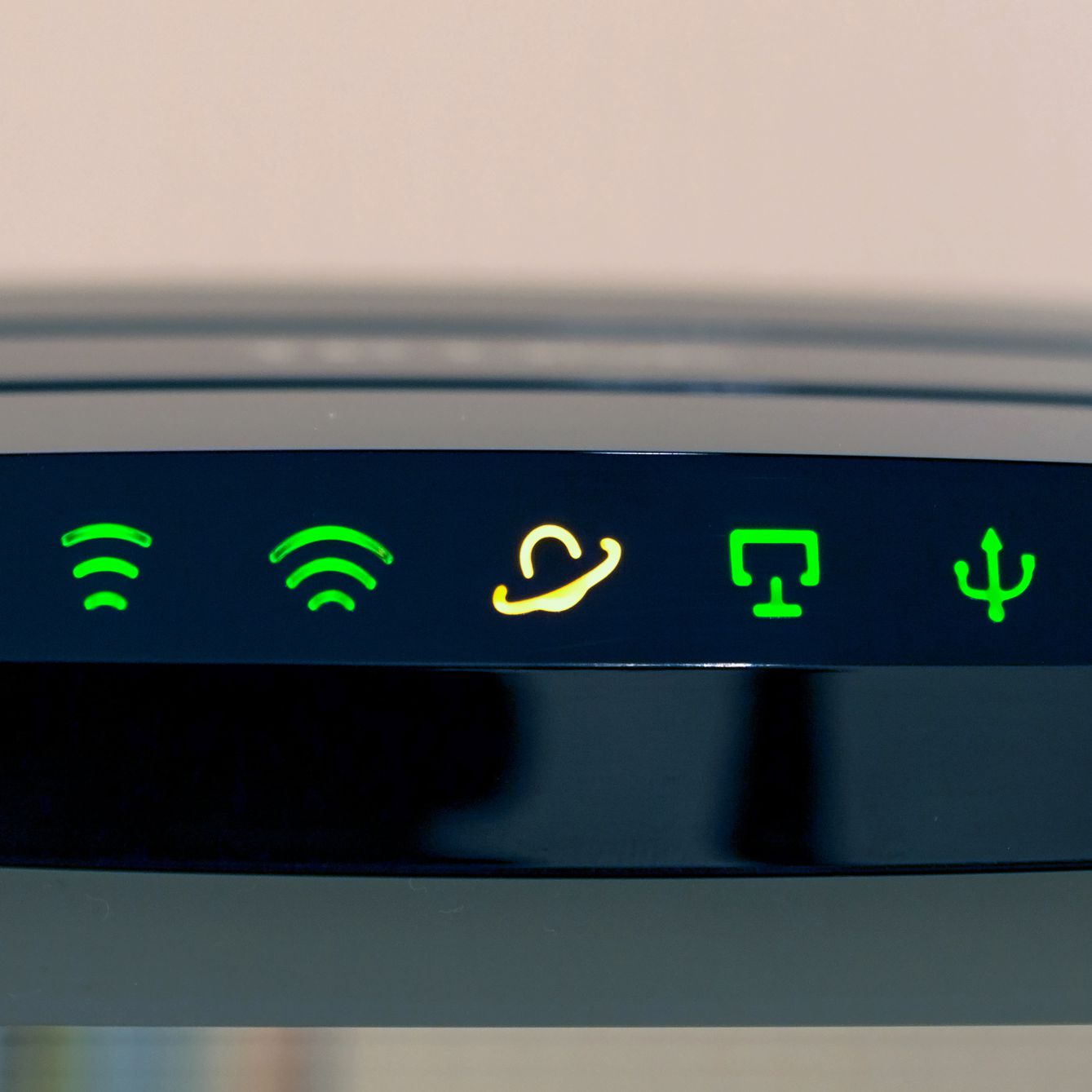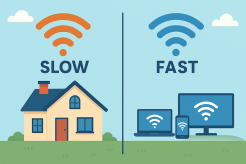What Do the Lights on My Modem and Router Mean?

The lights in your router and modem and what do they mean? Your network equipment's router and modem lights are LED indicators. They essentially provide you with information about how well your internet is performing. What is the significance of this? Because once you know how your in-home network works, you can optimize its potential and even perform some simple fixes for any connectivity issues that arise.
Related
Can I use my own wireless router with Spectrum Internet?
Difference between DSL and WIFI, what you need to know
What is a DSL modem, What are the best and how does it work?
Does Your Router Cause Slow Internet?
Need internet connection?
Give us a call at 1-888-317-7540 or chek out list of internet provider
Assume you're at a video conference from your home office, delivering a critical report on impending quarterly measures. The video begins to pixelate, the audio disappears, and the screen becomes frozen. It not only makes a horrible impression on clients, but it also puts you in a bad light with your bosses. You may now reboot the device, get back online, and rescue your reputation if you understand the underlying significance of the modem lights in general or why the modem online light is blinking in your specific scenario. It was as simple as that!
However, if you're unfamiliar with internet technology and vocabulary, this could be difficult. Knowing the purpose and function of each indicator is crucial because the color and state of one light on the modem can signify completely different things for another light. For example, depending on the hue, fast blinking modem lights may signal that your data is being sent online or that something is amiss with your connection.
Are you perplexed? Don't be concerned. We've got you covered. The following is a list of the most common modem and router lights found on internet equipment. Before you look into what each light means, make sure your modem and router (or modem/router gateway) are in good working order and that you've signed up for the best internet service available in your area. Let's get started.
Lights on your Router and Modem by function
A modem and router, or a modem-router combo, are required to have internet signals flowing throughout your home. Knowing what these networking devices look like and what they do is a given because they create the ecosystem that supports your digital existence. You might be wondering what a router looks like. It's a little square box with buttons, ports, and symbols on it, as well as LED lights. Depending on the model and make, a modem may also fall into this category. The following is a list of the LED icons you'll see on a typical modem/router:
ETHERNET/LINK – Indicates whether an Ethernet port on the modem/router has been used to connect an external device.
WLAN/WI-FI/WIRELESS – Wi-Fi connectivity is represented by this symbol.
WPS/SECURE – Indicates whether or not the modem/router is connected to a WPS-compatible device.
POWER/PWR – Indicates if the modem/router is on or off.
DSL/COAX – Indicates whether the modem is using a DSL or coax cable to connect to a local provider.
DOWNSTREAM/DS/RECEIVE – Indicates if the modem/router is downloading or receiving data from the internet.
UPSTREAM/US/SEND – Indicates if the modem/router is downloading or receiving data from the internet.
INTERNET/ONLINE – Represents a continuing internet connection.
Lights Color on your Router and Modem by function
The color fluctuation of the LED indicators on your modem and router is one of the most noticeable features. Yes, when the internet is down, online, or experiencing problems, the lights change color. You may turn your luck around and enjoy consistent access from your provider by correctly interpreting these colors on time. Obviously, different LED colors correspond to distinct modem and router light meanings. On a common modem/router, the following colors are seen frequently:
GREEN — Like its traffic-signal equivalent, green indicates that you should proceed. In other words, you can breathe a sigh of relief if the lights on your modem are solid green or flashing. It indicates that everything is in order and operating at maximum efficiency.
- The green POWER light on your modem/router indicates that your gadget is connected to a power source and is fully operational.
- Your modem is linked to the ISP's main network if the DSL/COAX light is green.
- Your modem/router is ready to receive data from the internet or is presently downloading it if the DOWNSTREAM indicator is green.
- Your modem/router is ready to send data to the web or is presently uploading it if the UPSTREAM indicator is green.
- Your network is online if the INTERNET light is green.
- The green ETHERNET light indicates that a device has been successfully connected to the Ethernet connection of the modem/router.
- Your in-home Wi-Fi connection is active if the WLAN light is green.
- The modem/green router's WPS light indicates that it is ready to connect to a WPS-compatible device using the enabled WPS button.
YELLOW/AMBER/ORANGE – Using the traffic light analogy again, yellow lights on the modem indicate that something is wrong with your network equipment. Overall, it's not a promising sign. It's time to put on your detective hat and investigate when the normally green lights turn yellow/amber/orange.
- The yellow POWER light on your modem/router indicates that your equipment is updating or testing software. Patience is essential in this situation. Wait until the modem/router has completed the upgrades before proceeding. Then, to give it a fresh start, reboot it.
The yellow INTERNET light indicates that your modem must be turned on. To do so, use an Ethernet cable to connect your modem to a PC, then go to your ISP's activation website, enter your credentials, and follow the directions to get online.
- The Wi-Fi radiofrequency is disabled when the WLAN light is yellow. Connect your modem/router to a PC via an Ethernet connection, type the modem/IP router's address into your browser's search box, go to the Wireless Setup menu, pick the Wireless Schedule, enable the wireless radio mode, and save your changes.
- The modem/yellow router's WPS light indicates that it is connected to a WPS-compatible device.
RED - A red signal light indicates that you should come to a complete stop. This is a non-starter. Similarly, red modem lights might indicate anything from a lost connection to a failed login attempt. When your normally smooth-running network goes down and brings your online activities to a halt, these lights illuminate.
- The modem/red router's POWER indicator indicates that your equipment is not firmly plugged into the outlet, that there is insufficient power from the source, or that the network device is experiencing some type of hardware or software malfunction. If the power cord has come free, try a different power outlet, reset the networking device, or replace the modem/router altogether to solve the problem.
- Your modem can't detect the ISP's core network on the other end of the line if the DSL/COAX light is red. Reboot your modem or check to see whether the equipment is set up correctly to fix this. You can also contact your Internet service provider to see if there is a network outage in your area.
- The presence of a red INTERNET light indicates that your modem/router requires authentication. In other words, the username and password aren't being accepted by the network. Here's a quick fix for this problem: To authenticate your credentials, go to the modem's user interface and select 'Quick Set-up.' If it doesn't work, contact your Internet service provider to have your modem/router reset or your username and password reset. It's entirely up to you.
Your modem/router is vulnerable to security threats if the WLAN indicator is red. Run a quick security scan and change your Wi-Fi password to strengthen your network.
- A red WPS light indicates a connection issue or overlapping sessions. To quickly repair this, try rebooting the modem.
BLACK/NO COLOR - The absence of light is referred to as black. While the change in color from green to red should be obvious, keep an eye out for your modem/router lights suddenly turning off.
- Your equipment is not connected to a viable power source if the POWER LED on the modem/router is black. To power up your network devices, check the AC cord and plug it into a working outlet.
- Your modem is not linked to the ISP's main network if the DSL/COAX indicator is black. If the copper wire becomes brittle, tighten it up or replace it.
- Your modem is not set up or programmed with an SSID and password if the INTERNET indicator is black. To turn on your modem, go to its configuration settings and complete the setup until the light goes green.
- No device is connected to the modem/Ethernet router's port if the ETHERNET indicator is black.
- Your in-home Wi-Fi is turned off if the WLAN light is black. On your router's control panel, press the Wi-Fi button. If this doesn't work, use a PC browser to access your modem's settings and enable the wireless transmitter option.
- The WPS function on the modem/router is disabled if the WPS light is black. You can enable it in your modem's settings by going to the Wireless Setup menu.
Lights Color on your Router and Modem by function
The LED indications on your modem and router change color as well as activity, indicating a new level of significance. They can either be solid or flash quickly. They can also be turned off, as described above in the ‘Black' color area. What is the current status of each of the light shows? Let's have a look.
SOLID — This refers to modem and router lights that remain steady. A solid green light indicates that your gear is functioning properly and that your connection is stable. A solid yellow/orange/amber light on your modem/router may indicate that it is conducting some sort of processing. A solid red light, on the other hand, indicates that something is wrong with your networking device, and you should troubleshoot it as soon as possible to restore internet connectivity. A solid off/no color light indicates a lack of power or functionalities that are deactivated.
FLASH/BLINK/FLICKER - Lights on modems and routers that flash, blink, or flicker have a story to tell. They must be examined.
- Your modem/router is coping with upgrades if the POWER light is flashing.
- A slow flashing DSL/COAX light indicates that your modem is looking for the ISP's core network, whereas a fast blinking DSL/COAX light indicates that the device is attempting to connect.
- Your modem/router is communicating with your local internet provider to download information for you if the DOWNSTREAM indicator is blinking.
- Your modem/router is connecting with your local internet provider to upload information for you, and the UPSTREAM indicator is blinking.
- Your modem/router is auto-detecting the network setup to get your IP online if the INTERNET indicator is blinking.
- The presence of a blinking WLAN light indicates that data is being transmitted.
- A blinking WPS indicator indicates that the modem/router is attempting but failing to connect to a WPS-compatible device, depending on the hue.
Conclusion:
If you want to experience continuous and stable internet connectivity and rapidly fix network faults without having to call in a specialist every time, understanding router and modem lights are essential.
Related Posts

Fri, Dec 19, 2025 4:36 AM
SafetyEasy Ways to Keep Your Video Calls Secure
Learn practical ways to secure your video conferencing apps and protect your calls from unwanted access, cyberattacks, and privacy risks.

Fri, Dec 19, 2025 2:39 AM
Internet Bundles Broadband Deals TechnologyWhy Internet Bills Keep Going Up (And Why It Feels Constant)
Why do internet bills keep rising? Learn how ISP fees, limited competition, and pricing strategies quietly increase broadband costs.

Thu, Dec 18, 2025 3:59 AM
cheap internet dealsViasat (Exede) Satellite Internet Plans & Pricings
Explore Viasat (Exede) satellite internet plans, pricing, and speeds. Learn about availability, equipment, technology, and tips for rural and remote areas.

Thu, Dec 18, 2025 2:14 AM
SafetySimple Online Safety Tips Anyone Can Follow
Learn simple, practical ways to stay safe online—even if you’re not tech-savvy. Protect your data, avoid scams, and improve digital security with easy habits.

Wed, Dec 17, 2025 2:22 AM
WifiWhy’s My Internet Slower Than What I’m Paying For?
Paying for fast internet but getting slow speeds? Learn the real reasons your internet doesn’t match your plan and how to fix performance issues.